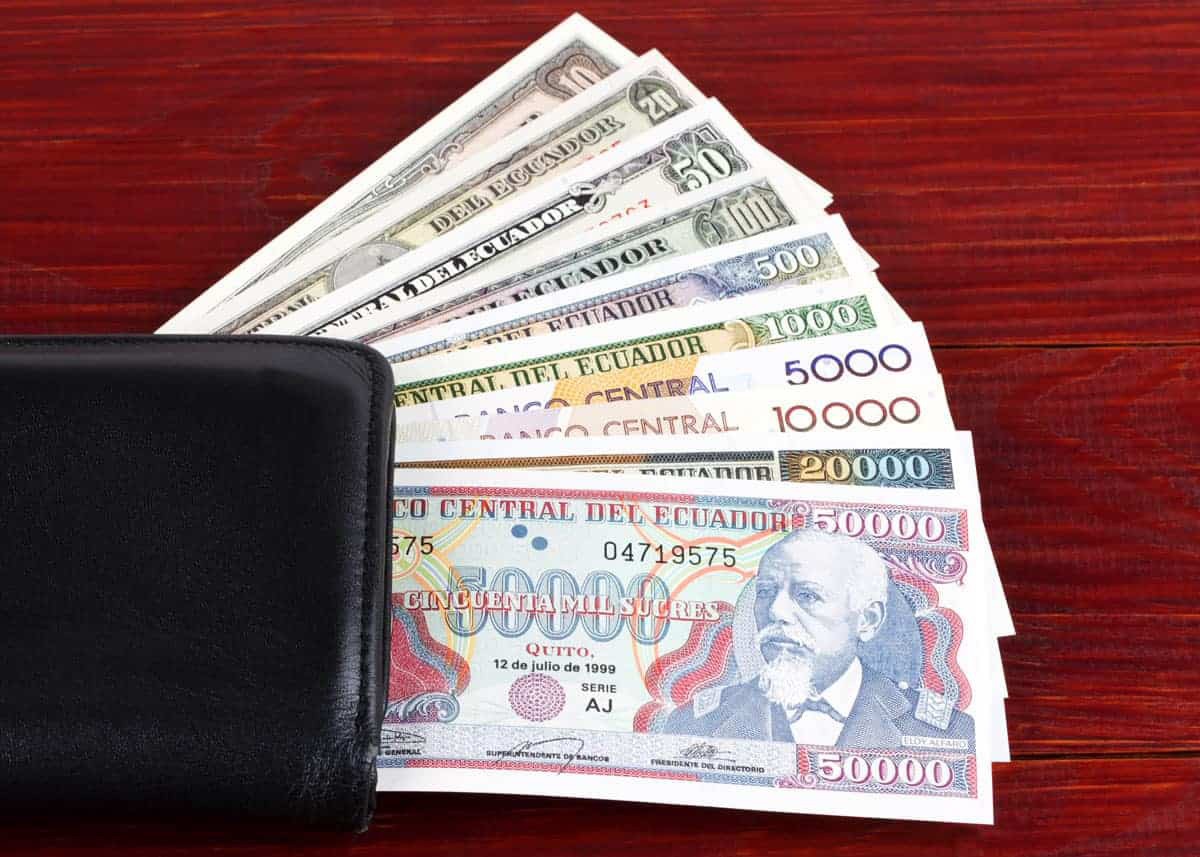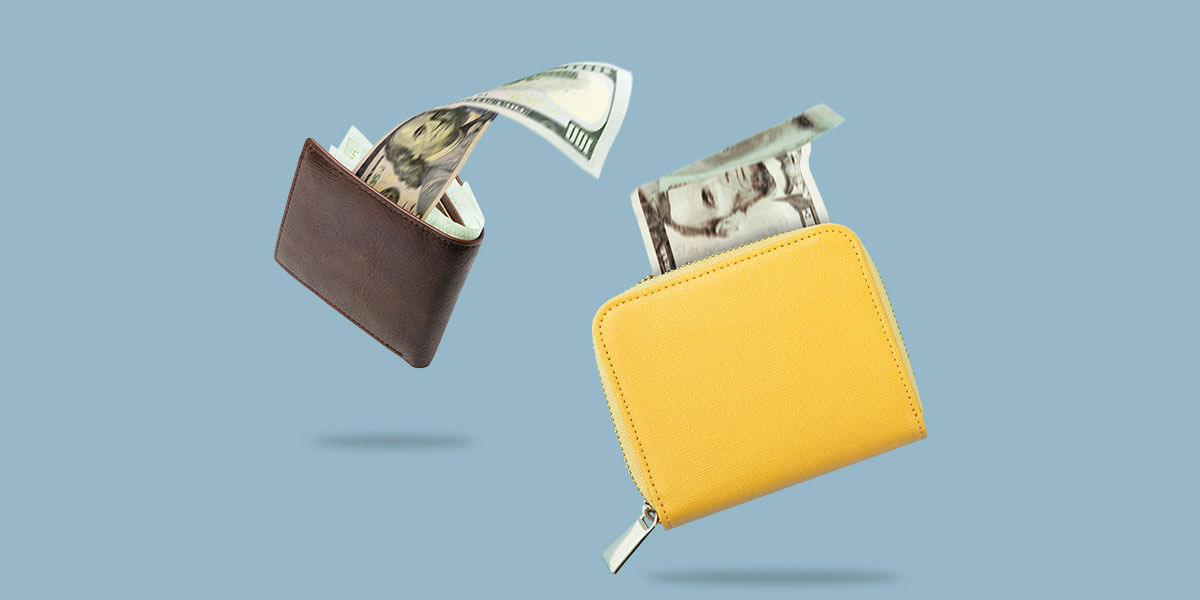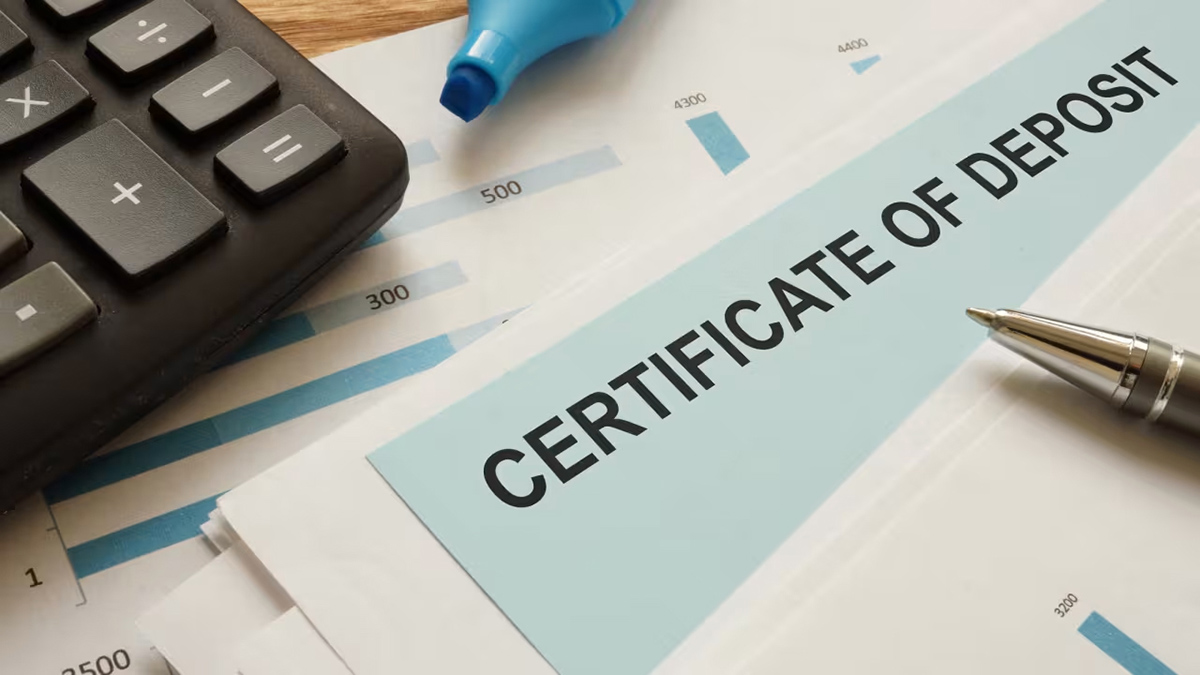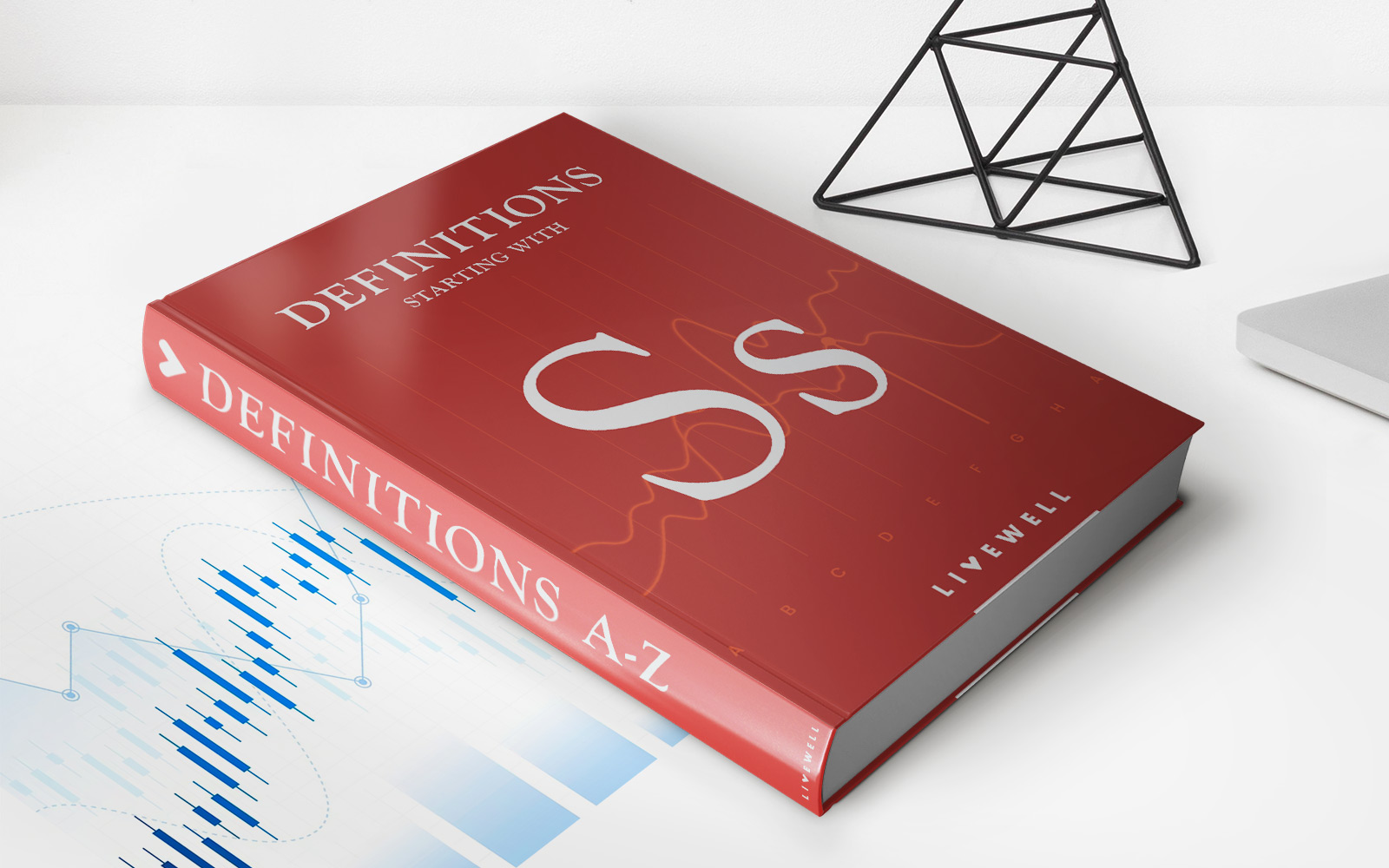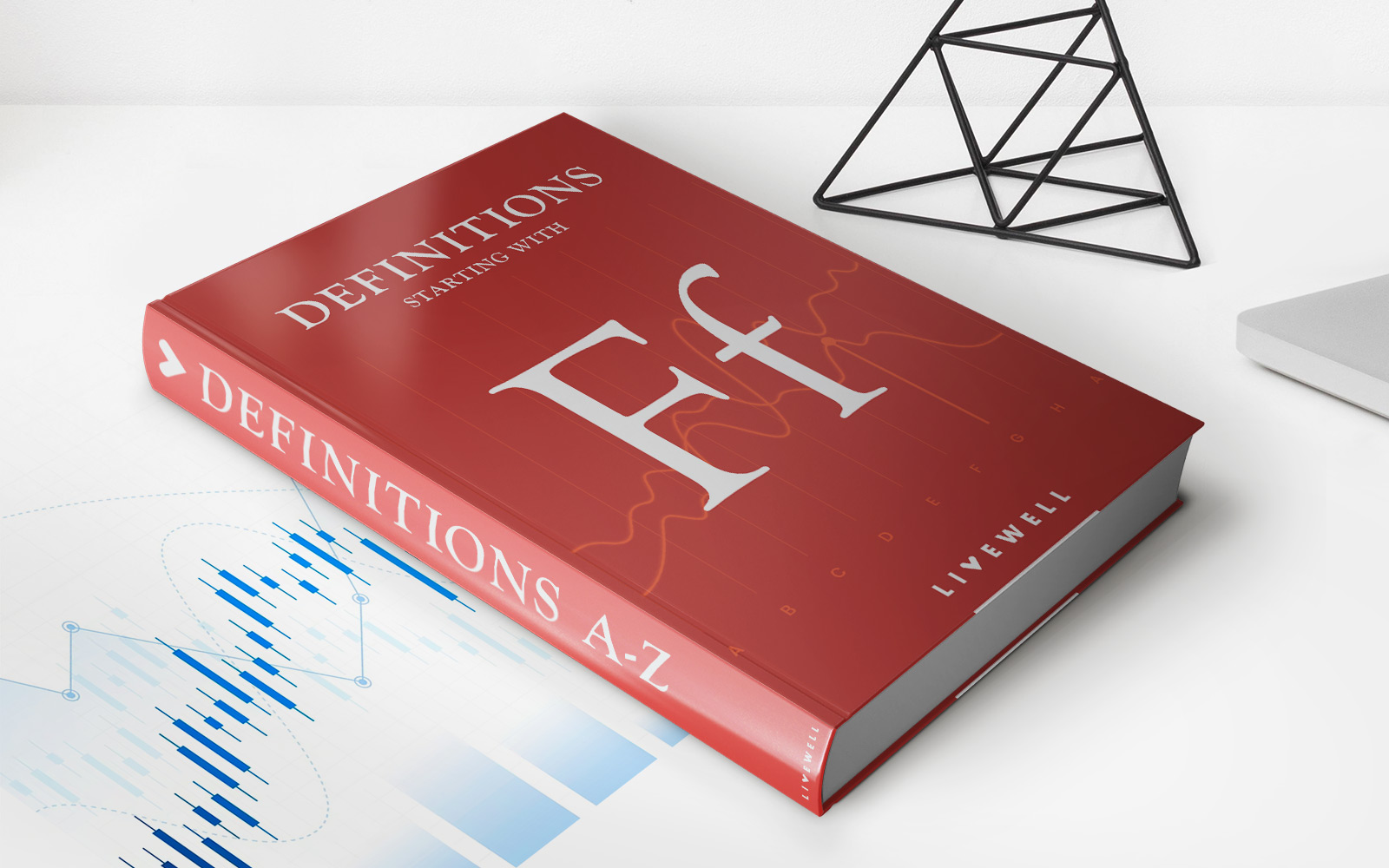

Finance
How Often Do Certificates Of Deposit Compound
Modified: February 21, 2024
Learn how often certificates of deposit compound and maximize your finance potential. Discover the benefits of compounding interest and make the most of your investment
(Many of the links in this article redirect to a specific reviewed product. Your purchase of these products through affiliate links helps to generate commission for LiveWell, at no extra cost. Learn more)
Table of Contents
Introduction
In the world of finance, there are various investment options available to individuals looking to grow their wealth. One such option is a Certificate of Deposit (CD). CDs are popular among investors due to their low-risk nature and guaranteed returns. If you’re considering investing in a CD, it’s essential to understand how they work and the factors that affect their returns.
A Certificate of Deposit is a financial product offered by banks and credit unions that allows individuals to deposit a certain amount of money for a fixed period of time, typically ranging from a few months to a few years. In return, the investor receives interest payments on the principal amount they deposited.
Understanding compound interest is crucial when it comes to comprehending how CDs earn returns. Compound interest refers to the interest that is calculated not only on the initial principal amount but also on the accumulated interest from previous periods. The frequency at which the interest is compounded plays a significant role in determining the total returns on a CD.
In this article, we will explore the different compounding frequencies for Certificates of Deposit and discuss their implications on your investment. By understanding how often CDs compound, you can make an informed decision when choosing the right product for your financial goals.
What is a Certificate of Deposit (CD)?
A Certificate of Deposit (CD) is a type of financial product offered by banks and credit unions where individuals can deposit a certain amount of money for a fixed period of time, known as the term of the CD. In return for their deposit, investors receive a fixed interest rate that is usually higher than the interest rates offered by regular savings accounts.
One of the main advantages of investing in a CD is the low level of risk involved. Unlike stocks or other investments that are subject to market fluctuations, CDs are insured by the Federal Deposit Insurance Corporation (FDIC) for up to $250,000 per depositor, per insured bank. This makes CDs a reliable and secure way to grow your savings.
When opening a CD, you will typically have to choose a specific term, ranging from a few months to several years. The longer the term, the higher the interest rate offered by the bank. However, it’s important to note that once you deposit your money into a CD, you generally cannot access it until the CD matures, unless you are willing to pay an early withdrawal penalty.
CDs provide a predictable and steady source of income through the interest earned on the principal amount. The interest rate on a CD is fixed for the duration of the term, meaning it will not fluctuate with changes in the market. This can be beneficial for individuals looking for a safe investment with a guaranteed return.
It’s essential to note that the maximum amount you can deposit into a CD may vary depending on the financial institution. Some banks have minimum deposit requirements, while others have no minimums. It’s advisable to carefully consider your financial goals and deposit capabilities before choosing a CD that suits your needs.
Overall, a Certificate of Deposit is a secure and reliable investment option for individuals looking to grow their savings over a fixed period of time. The fixed interest rate and the low-risk nature of CDs make them an attractive choice for conservative investors who prioritize stability and guaranteed returns.
Understanding Compound Interest
Compound interest is a powerful concept in the world of finance, and it plays a pivotal role in determining the returns on a Certificate of Deposit (CD).
Simply put, compound interest is the interest calculated not only on the initial principal amount but also on the accumulated interest from previous periods. This means that the interest earned on a CD is reinvested, leading to exponential growth over time.
To better understand compound interest, let’s consider an example. Suppose you invest $10,000 in a CD with an annual interest rate of 5%. If the interest is compounded annually, at the end of the year, you would earn $500 in interest, bringing your total balance to $10,500. However, in the following year, the interest would be calculated not just on the initial $10,000 but also on the additional $500 earned as interest in the first year. This compounding effect continues over the term of the CD, resulting in higher returns.
The frequency at which interest is compounded can vary depending on the financial institution and the terms of the CD. Some common compounding periods include monthly, quarterly, semi-annually, and annually. The more frequently interest is compounded, the higher the total returns on the CD.
It’s important to note that the compounding frequency affects the effective annual yield (APY) of a CD. The APY accounts for the compounding effect and gives a more accurate representation of the returns. Generally, the more frequently interest is compounded, the higher the APY will be.
Understanding the power of compound interest is important when considering investing in a CD. The longer the term of the CD, the greater the effect of compounding, and the higher the potential returns. By reinvesting the interest earned, you can leverage the power of compounding to accelerate the growth of your investment.
In the next sections, we will explore the different compounding frequencies for Certificates of Deposit and discuss their implications on your investment. By understanding how often CDs compound, you can make an informed decision when choosing the right product to maximize your returns.
How Often Do Certificates of Deposit Compound?
The compounding frequency of a Certificate of Deposit (CD) refers to how often interest is calculated and added to the principal amount. Different financial institutions may offer CDs with varying compounding periods, and understanding these frequencies is crucial in determining your returns. Let’s explore the most common compounding frequencies for CDs:
- Monthly Compounding: With monthly compounding, interest is calculated and added to the principal on a monthly basis. This means that every month, the interest earned in that period is included in the new principal amount for the subsequent month’s interest calculation. Monthly compounding allows for quicker growth of your investment due to the more frequent addition of interest.
- Quarterly Compounding: For CDs that compound quarterly, interest is calculated and added to the principal every three months. This means that every quarter, the interest earned in that period is added to the principal for the next quarter’s interest computation. While quarterly compounding is less frequent than monthly compounding, it still allows for steady growth of your investment.
- Semi-annual Compounding: CDs that compound semi-annually have interest calculated and added to the principal twice a year. This means that every six months, the interest earned in that period is included in the principal for the subsequent six months’ interest calculation. Although semi-annual compounding occurs less frequently than monthly or quarterly compounding, it still enables the steady accumulation of interest.
- Annual Compounding: With annual compounding, interest is calculated and added to the principal once a year. This means that at the end of each year, the interest earned is added to the principal for the next year’s interest computation. While annual compounding occurs less frequently than the previous frequencies mentioned, it still provides consistent growth of your investment.
- Daily Compounding: Some financial institutions may offer CDs with daily compounding. This means that interest is calculated and added to the principal on a daily basis. Daily compounding allows for the most frequent addition of interest and can result in the highest overall returns on your investment.
It’s important to note that the compounding frequency affects the effective annual yield (APY) of a CD. The higher the compounding frequency, the higher the APY and potential overall returns. When comparing different CD options, pay attention to the compounding frequency to make an informed decision and select the one that aligns with your financial goals.
Now that you have a better understanding of the different compounding frequencies for Certificates of Deposit, you can choose the one that suits your needs and maximize your returns. Remember, the more frequently interest is compounded, the greater the growth potential for your investment over the long term.
Monthly Compounding
Monthly compounding is a common frequency used by financial institutions when calculating the interest on Certificates of Deposit (CDs). With monthly compounding, the interest earned on a CD is calculated and added to the principal on a monthly basis. This compounding effect can lead to accelerated growth of your investment over time.
When interest is compounded monthly, the financial institution divides the annual interest rate by twelve and applies it to the principal balance each month. As a result, the interest earned in each month is added to the principal for the subsequent month’s interest calculation. This continuous addition of interest allows your investment to grow at a faster rate compared to less frequent compounding periods.
Let’s look at an example to understand the impact of monthly compounding. Suppose you invest $10,000 in a CD with an annual interest rate of 4% compounded monthly. In the first month, the interest on the principal balance would be ($10,000 * 4% / 12) = $33.33. This amount is added to the principal, resulting in a new balance of $10,033.33 for the next month’s interest calculation. This process continues for each subsequent month, compounding the interest on the growing principal amount.
By compounding interest on a monthly basis, your investment can experience exponential growth. The more months the interest compounds, the more significant the compounding effect becomes. Over the course of several years, this can lead to substantial returns and contribute to the overall growth of your investment.
Additionally, the high compounding frequency of monthly compounding affects the effective annual yield (APY) of a CD. The APY accounts for the compounding effect and gives a more accurate representation of the returns. Generally, CDs with monthly compounding will have a higher APY compared to CDs with less frequent compounding.
It’s important to keep in mind that the compounding frequency, including monthly compounding, may vary depending on the financial institution and the specific terms of the CD. When considering different CD options, carefully review the compounding frequency and corresponding APY to assess the potential growth and returns on your investment.
Overall, monthly compounding is an attractive feature for investors looking to maximize the growth of their investment in Certificates of Deposit. By taking advantage of the compounding effect every month, your savings can experience steady and incremental growth, helping you reach your financial goals faster.
Quarterly Compounding
When it comes to Certificates of Deposit (CDs), quarterly compounding is another commonly used frequency for calculating interest. With quarterly compounding, the interest earned on a CD is calculated and added to the principal every three months. This compounding frequency allows your investment to grow steadily over time.
In the case of quarterly compounding, the financial institution divides the annual interest rate by four and applies it to the principal balance at the end of each quarter. This means that the interest earned in each quarter is added to the principal for the subsequent quarter’s interest calculation. This compounding effect can lead to a significant increase in your investment’s value over the term of the CD.
For example, let’s say you invest $10,000 in a CD with an annual interest rate of 3% compounded quarterly. At the end of the first quarter, the interest on the principal balance would be ($10,000 * 3% / 4) = $75. This interest amount is added to the principal, resulting in a new balance of $10,075 for the next quarter’s interest calculation. This process continues for each subsequent quarter, compounding the interest on the growing principal amount.
The compounding effect of quarterly compounding ensures that your investment steadily grows over time. While not as frequent as monthly compounding, the longer compounding period still allows for consistent growth of your savings. This can be advantageous for individuals who prefer a moderately accelerated growth rate while maintaining their capital in a CD.
It’s important to note that the effective annual yield (APY) of a CD with quarterly compounding will vary based on the interest rate and compounding frequency. Generally, CDs with quarterly compounding will have a slightly lower APY compared to CDs with more frequent compounding, such as monthly compounding. It’s crucial to consider the APY when comparing different CD options to gauge the potential returns on your investment accurately.
Overall, quarterly compounding is a popular choice for investors seeking moderate growth and stable returns on their investment. By taking advantage of the compounding effect every three months, your savings can experience consistent growth over the term of the CD. It is vital to assess your financial goals and risk tolerance to determine whether quarterly compounding aligns with your investment strategy.
Semi-annual Compounding
Semi-annual compounding is a compounding frequency commonly used by financial institutions when calculating the interest on Certificates of Deposit (CDs). With semi-annual compounding, the interest earned on a CD is calculated and added to the principal twice a year. This compounding frequency offers a balance between the frequency of compounding and the growth potential of your investment.
In the case of semi-annual compounding, the financial institution divides the annual interest rate by two and applies it to the principal balance at the end of each six-month period. This means that the interest earned in each period is added to the principal for the subsequent period’s interest calculation. While less frequent than monthly or quarterly compounding, semi-annual compounding still allows for steady growth of your investment.
Let’s say you invest $10,000 in a CD with an annual interest rate of 2.5% compounded semi-annually. At the end of the first six-month period, the interest on the principal balance would be ($10,000 * 2.5% / 2) = $125. This interest amount is added to the principal, resulting in a new balance of $10,125 for the next six-month period’s interest calculation. This process continues for each subsequent period, compounding the interest on the growing principal amount.
The compounding effect of semi-annual compounding ensures that your investment steadily grows over time. Even though it occurs less frequently than monthly or quarterly compounding, semi-annual compounding still contributes to incremental growth and can lead to significant returns on your investment over the term of the CD.
The effective annual yield (APY) of a CD with semi-annual compounding will be influenced by the interest rate and compounding frequency. Generally, CDs with semi-annual compounding will have a slightly lower APY compared to CDs with more frequent compounding. It’s important to consider the APY when comparing different CD options to gauge the potential returns on your investment accurately.
Semi-annual compounding is a suitable choice for investors who seek steady, moderate growth on their investment while maintaining their capital in a CD. By taking advantage of the compounding effect every six months, your savings can experience consistent growth over the term of the CD. It’s crucial to assess your financial goals and risk tolerance to determine whether semi-annual compounding aligns with your investment strategy.
Annual Compounding
Annual compounding is a common compounding frequency used by financial institutions when calculating the interest on Certificates of Deposit (CDs). With annual compounding, the interest earned on the CD is calculated and added to the principal once a year.
In the case of annual compounding, the financial institution applies the annual interest rate to the principal balance at the end of each year. This means that the interest earned in each year is added to the principal for the subsequent year’s interest calculation. While less frequent than monthly, quarterly, or semi-annual compounding, annual compounding still allows for consistent growth of your investment.
For example, let’s say you invest $10,000 in a CD with an annual interest rate of 3% compounded annually. At the end of the first year, the interest on the principal balance would be ($10,000 * 3%) = $300. This interest amount is added to the principal, resulting in a new balance of $10,300 for the next year’s interest calculation. This process continues for each subsequent year of the CD’s term.
While annual compounding may lead to slower growth compared to more frequent compounding frequencies, it still provides a reliable and consistent growth of your investment. With annual compounding, you can expect a steady increase in your savings over the duration of the CD.
It’s important to note that the effective annual yield (APY) of a CD with annual compounding will be influenced by the interest rate and compounding frequency. Generally, CDs with annual compounding will have a lower APY compared to CDs with more frequent compounding. It’s crucial to consider the APY when comparing different CD options to gauge the potential returns on your investment accurately.
Annual compounding is suitable for investors who prefer a long-term investment approach and are comfortable with a slower but consistent growth rate. By taking advantage of the compounding effect once a year, your savings can experience reliable growth over the term of the CD. It’s important to align your investment goals and risk tolerance with the compounding frequency offered by the CD to ensure it meets your financial needs.
Daily Compounding
Daily compounding is a compounding frequency that offers the most frequent addition of interest on Certificates of Deposit (CDs). With daily compounding, the interest earned on a CD is calculated and added to the principal on a daily basis, resulting in the potential for significant growth over time.
In the case of daily compounding, the financial institution divides the annual interest rate by the number of days in a year and applies it to the principal balance each day. This means that the interest earned on the CD is added to the principal every day, continuously compounding and accelerating the growth of your investment.
For example, let’s say you invest $10,000 in a CD with an annual interest rate of 4% compounded daily. At the end of the first day, the interest on the principal balance would be ($10,000 * 4% / 365) = $1.10. This interest amount is added to the principal, resulting in a new balance of $10,001.10 for the next day’s interest calculation. This process continues for each subsequent day, compounding the interest on the growing principal amount.
The high compounding frequency of daily compounding offers the potential for continuous exponential growth of your investment. By compounding interest on a daily basis, even small increments can accumulate over time, resulting in significant returns on your investment.
It’s important to note that the effective annual yield (APY) of a CD with daily compounding will be influenced by the interest rate and compounding frequency. Generally, CDs with daily compounding will have a higher APY compared to CDs with less frequent compounding. It’s crucial to consider the APY when comparing different CD options to assess the potential returns on your investment accurately.
Daily compounding is an appealing option for investors seeking the maximum potential growth of their investment in Certificates of Deposit. By taking advantage of the compounding effect every day, your savings can experience rapid growth over the term of the CD. However, it’s essential to consider your financial goals and risk tolerance as daily compounding may require a higher initial investment and potentially limit liquidity options.
Factors to Consider When Choosing a Compound Frequency
When investing in Certificates of Deposit (CDs), the compound frequency of the interest plays a crucial role in determining the growth and overall returns of your investment. Each compounding frequency has its own advantages and considerations. Here are some factors to consider when choosing the compound frequency for your CD:
1. Investment Goals:
Consider your investment goals and timeline. If you have a long-term investment horizon, you may benefit from compounding frequencies like daily or monthly, which can accelerate the growth of your investment. However, if you require liquidity in the short-term, less frequent compounding, such as quarterly or semi-annual, may be more suitable.
2. Risk Tolerance:
Evaluate your risk tolerance. Higher compound frequencies, such as daily or monthly compounding, may offer the potential for higher returns but can also be associated with higher risk. If you prefer a more conservative approach, less frequent compound frequencies, like quarterly or annual compounding, may align better with your risk tolerance.
3. Liquidity Needs:
Consider your liquidity needs. Compounding frequencies, especially those that are less frequent, can limit access to your funds until the CD reaches maturity. If you anticipate the need for early withdrawals, it may be more appropriate to choose a compound frequency that aligns with your liquidity needs, such as monthly or quarterly compounding.
4. APY Comparison:
Compare the effective annual yield (APY) of different CDs. The APY takes into account the compounding effect and provides a more accurate measure of the returns. When comparing CDs with different compounding frequencies, considering their respective APYs allows for a more informed decision regarding potential returns.
5. Time Commitment:
Evaluate the time commitment of your investment. CDs typically have a fixed term, and changing the compound frequency may not be possible once the CD is established. Therefore, it’s important to select a compounding frequency that aligns with your long-term investment strategy and time commitment.
6. Financial Institution Options:
Take into account the compound frequencies offered by different financial institutions. Not all institutions provide the same compounding options, and the availability of specific frequencies may vary. Research and compare the offerings of different institutions to find one that fits your desired compounding frequency.
By considering these factors, you can make an informed decision when selecting the compound frequency for your CD. Remember that the compounding frequency can significantly impact the growth and overall returns of your investment, so it’s important to align it with your specific financial goals, risk tolerance, and liquidity needs.
Conclusion
Certificates of Deposit (CDs) offer individuals a secure and predictable way to grow their savings over a fixed period of time. Understanding the compound frequency of a CD is essential in maximizing your returns and achieving your financial goals.
The compounding frequency determines how often interest is calculated and added to the principal amount of a CD. The more frequent the compounding, the greater the growth potential of your investment. Compounding frequencies can range from daily to monthly, quarterly, semi-annually, or annually.
Monthly compounding provides more frequent additions of interest and can lead to accelerated growth. Quarterly compounding offers a balance between frequency and steady growth. Semi-annual compounding ensures consistent growth, while annual compounding provides reliability over the long term. Daily compounding offers the most frequent addition of interest and potential for rapid growth.
When choosing a compound frequency for your CD, it’s important to consider various factors. These include your investment goals, risk tolerance, liquidity needs, APY comparison, time commitment, and the options available from different financial institutions.
By understanding the implications of different compound frequencies, you can make an informed decision that aligns with your financial objectives. Whether you prioritize steady growth, accelerated returns, or flexibility in accessing your funds, there is a compound frequency that suits your needs.
Remember, as you weigh your options, take into account the potential impact of the compound frequency on the effective annual yield (APY) and overall growth of your investment. Carefully consider the compounding frequency that aligns with your goals and risk tolerance to ensure the best possible outcome for your financial future.
In conclusion, Certificates of Deposit offer a low-risk investment option, and the compound frequency plays a significant role in maximizing your returns. By choosing the right compound frequency for your CD and carefully managing your investment, you can make the most of your savings and strive towards financial success.

